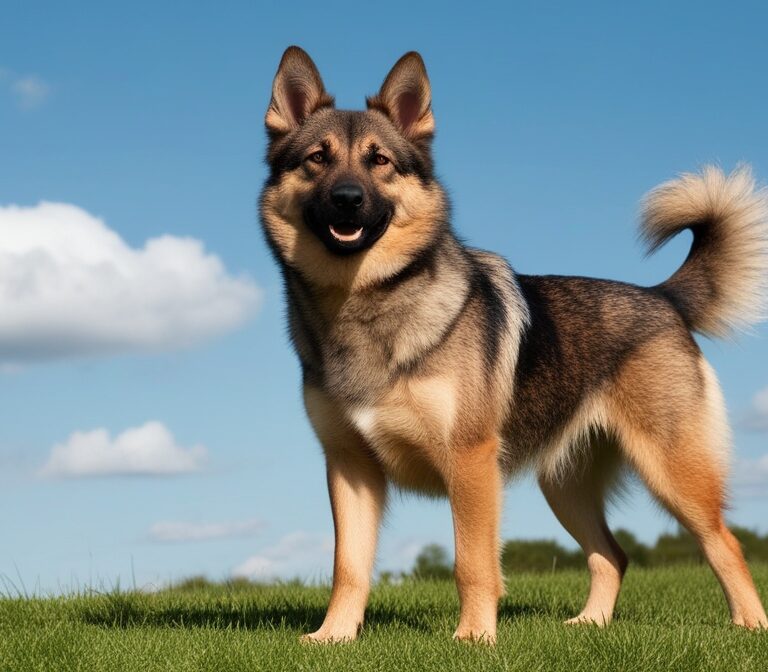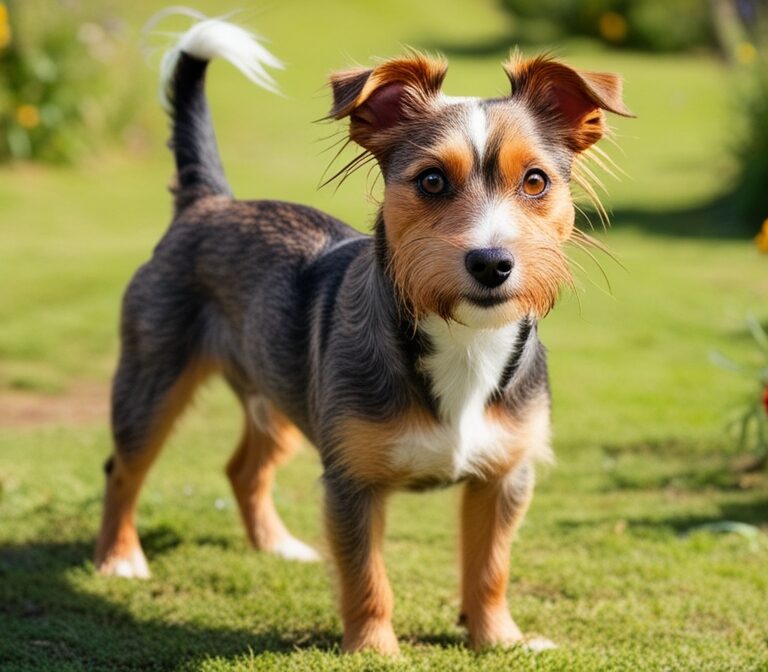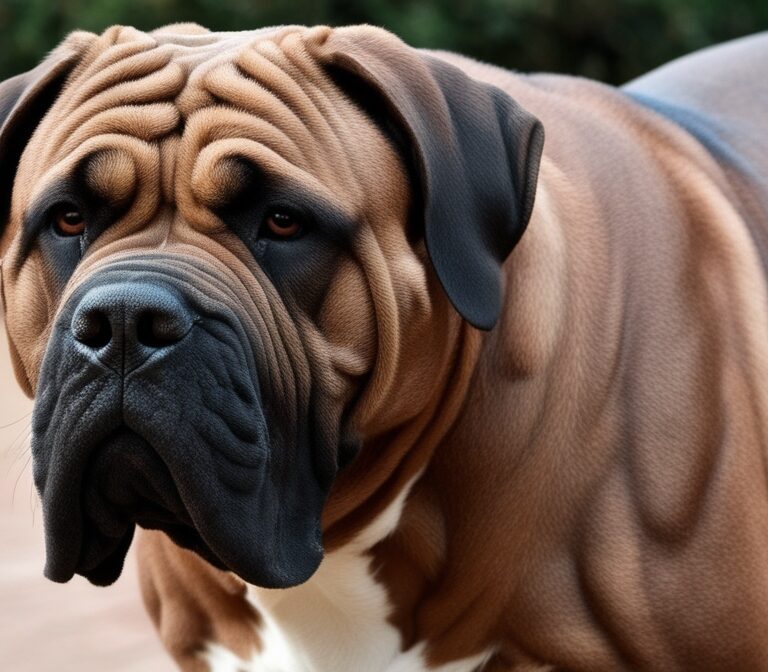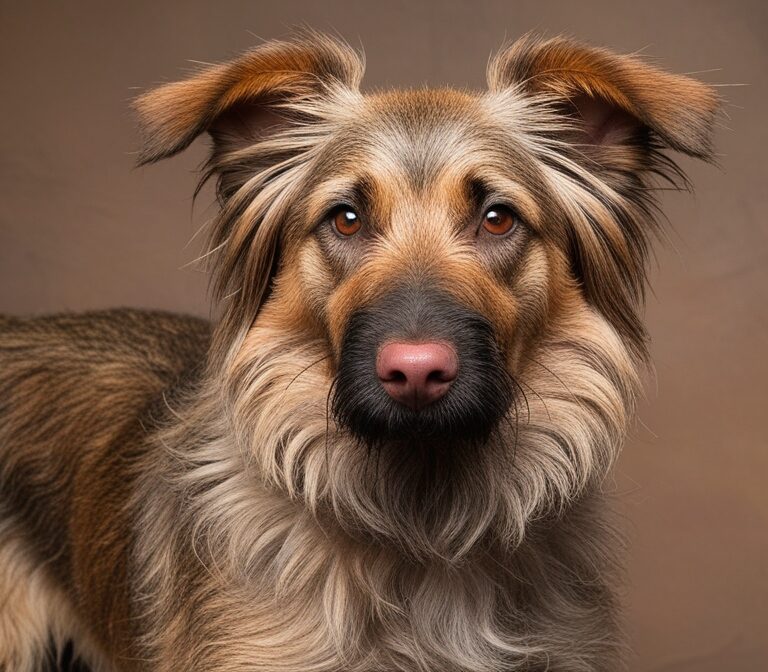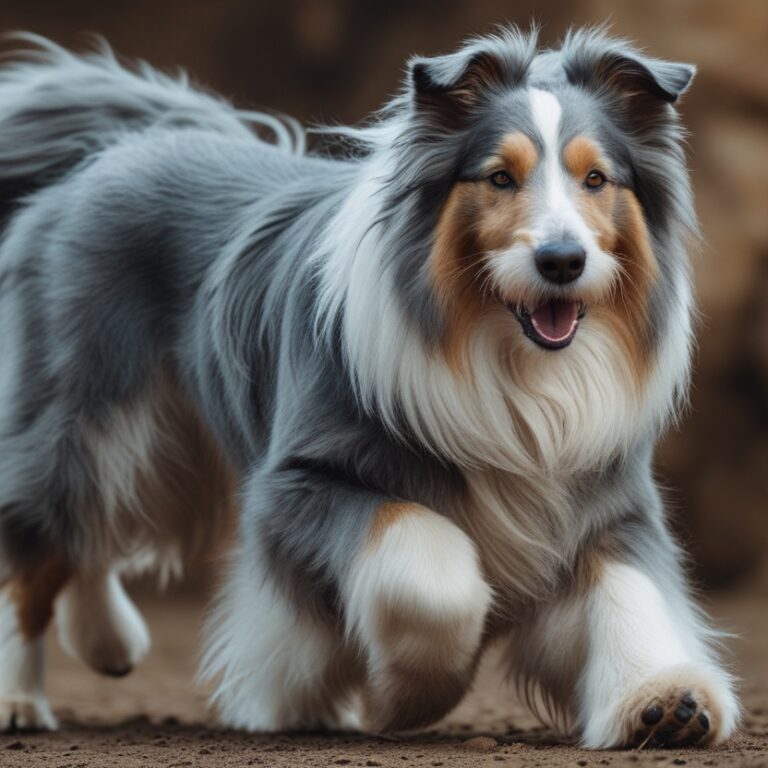Swedish Lapphund: Complete Breed Guide for Owners, Trainers, and Enthusiasts
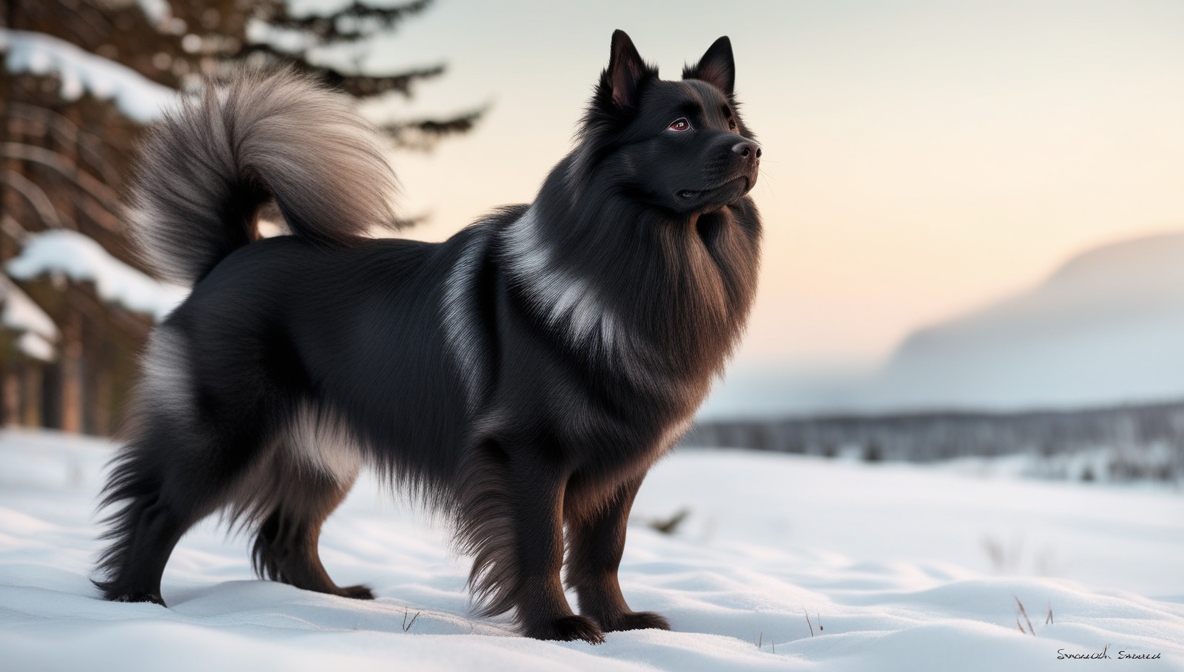
Introduction to the Swedish Lapphund
The Swedish Lapphund is a rare and historically significant dog breed originating from the northern regions of Sweden. Known for its kind, affectionate, and lively temperament, this spitz-type dog is not only a companion animal but also a working breed with deep cultural roots. The Swedish Lapphund is classified as part of the Nordic herding dogs, and it has long been associated with the Sami people of Lapland, who relied on them for herding reindeer.
This breed is instantly recognizable due to its dense double coat, which can appear in black or liver colors, and its alert, fox-like expression. Unlike many modern dog breeds that were developed for companionship first, the Swedish Lapphund has always been a multi-purpose working dog. It is capable of herding, guarding, and assisting humans in harsh arctic environments.
Today, the breed is relatively rare, with only a few thousand registered worldwide, yet it remains beloved in Sweden as the national dog of the country. Its trainability, intelligence, and lively character make it an excellent choice for active families, agility enthusiasts, and those interested in preserving Nordic heritage breeds.
Owning a Swedish Lapphund means more than having a pet; it’s about embracing a piece of Scandinavian history and culture. For anyone considering this breed, it is essential to understand its origins, characteristics, and needs in order to provide the right environment for this energetic and loyal dog.
Origin and History of the Swedish Lapphund
The history of the Swedish Lapphund spans thousands of years, making it one of the oldest native dog breeds in Sweden. Archaeological evidence and genetic studies link the breed back to the ancient spitz-type dogs that traveled with humans during early migrations into Northern Europe.
The Sami people, indigenous to Lapland (covering parts of Sweden, Norway, Finland, and Russia), played a crucial role in developing and preserving this breed. For centuries, the Swedish Lapphund served as an essential working companion, primarily used to herd and protect reindeer. Its alertness, agility, and weather-resistant coat made it indispensable in the arctic climate, where other animals could not perform as effectively.
In addition to herding, these dogs were often relied upon for guarding settlements and even as spiritual companions. Sami shamans are believed to have considered them sacred dogs, attributing mystical qualities to their loyalty and intelligence.
The breed was officially recognized in the early 20th century. The Swedish Kennel Club registered the first Swedish Lapphund in 1903, making it the first Lapphund breed to gain official recognition. Since then, organizations like the Fédération Cynologique Internationale (FCI) and the American Kennel Club (AKC) have classified it as part of the Spitz and Primitive type dogs.
Although modern herding practices have reduced the demand for reindeer-herding dogs, the Swedish Lapphund continues to thrive as a family companion, show dog, and agility competitor. Its deep connection to Sami culture keeps it culturally significant, even as global awareness of this rare breed slowly increases.
Recognition by Kennel Clubs
The Swedish Lapphund enjoys recognition by several major kennel clubs worldwide, which helps preserve the breed’s standards and ensures responsible breeding.
- Swedish Kennel Club (SKK): The first official body to recognize the breed in 1903, setting the earliest written standards.
- Fédération Cynologique Internationale (FCI): Places the Swedish Lapphund in Group 5: Spitz and Primitive Types, Section 3: Nordic Watchdogs and Herders.
- American Kennel Club (AKC): Recognized under the Foundation Stock Service (FSS), a program for developing rare breeds in the U.S.
- United Kennel Club (UKC): Recognizes the breed under the Northern Breed Group, emphasizing its working heritage.
Recognition is not just about official titles; it also provides a framework for maintaining the breed’s physical standards, temperament expectations, and health monitoring. This ensures that future generations of Swedish Lapphunds remain true to their heritage.
Breed recognition also enhances opportunities for dog shows, agility competitions, and breeding programs. For rare breeds like the Swedish Lapphund, such acknowledgment is crucial for their survival outside their native homeland.
General Appearance of the Breed
The Swedish Lapphund has a distinctive spitz-like appearance, marked by its medium size, thick double coat, and expressive features.
- Size: Typically stands 16–20 inches (40–50 cm) tall at the shoulder and weighs 30–45 pounds (14–20 kg).
- Coat: A dense double coat consisting of a soft, insulating undercoat and a harsher outer coat. This makes the breed well-suited for cold climates.
- Colors: Standard coat colors include black (most common) and liver. Some dogs may have white markings on the chest, paws, or tail tip.
- Head and Expression: A wedge-shaped head, medium-sized pointed ears, and almond-shaped dark eyes give the breed an alert and intelligent look.
- Tail: Carried curled over the back, typical of spitz breeds.
This appearance not only provides functionality—protection against snow, rain, and wind—but also contributes to the breed’s striking and fox-like look, making it visually appealing to dog lovers worldwide.
Temperament and Personality Traits
The temperament of the Swedish Lapphund is one of its most attractive qualities. Known for being kind, affectionate, and lively, this breed is a wonderful balance of working dog instincts and family companionship.
- Affectionate and Loyal: They form strong bonds with their families and thrive in environments where they are included in daily activities.
- Lively and Energetic: With a history of herding reindeer, they possess high energy levels and enjoy active play.
- Trainable and Intelligent: Quick learners who respond well to positive reinforcement training. Their alertness makes them good watchdogs without being overly aggressive.
- Social Nature: Friendly toward children and generally good with other pets if socialized early.
- Adaptable: While they love outdoor activities, they can adapt to apartment life provided they receive sufficient daily exercise.
However, their intelligence and energy can also lead to boredom and mischief if not properly engaged. Owners must provide mental stimulation through training, agility sports, or interactive toys.
The Swedish Lapphund’s personality makes it an ideal dog for families, active individuals, and even first-time dog owners who are prepared for its exercise and grooming needs.
Swedish Lapphund vs. Other Nordic Breeds
When comparing the Swedish Lapphund with other Nordic dog breeds, it becomes clear that, although they share physical similarities as spitz-type dogs, their historical roles and temperaments differ in meaningful ways.
- Finnish Lapphund: Closely related, the Finnish Lapphund also originated with the Sami people but developed in Finland. The Finnish version is slightly larger, with a broader range of coat colors, and is often described as calmer. Both breeds were used for reindeer herding, but the Swedish Lapphund has a sharper, more alert personality.
- Norwegian Buhund: The Buhund is more shepherd-like and was historically a farm guardian in Norway. Unlike the Swedish Lapphund, it is more commonly fawn or wheaten in color. It also has a slightly leaner frame, built for speed rather than endurance.
- Samoyed: The Samoyed is a more famous Nordic breed, originating from Siberia. It is larger, with a striking white fluffy coat and a reputation as a sled-pulling dog. In contrast, the Swedish Lapphund was more versatile—herding, guarding, and companionship all rolled into one.
- Icelandic Sheepdog: This breed is known for its agility and playful personality. Like the Swedish Lapphund, it has a curled tail and double coat but is generally smaller and lighter.
All of these breeds share resilience in harsh climates, strong work ethics, and loyal temperaments. However, the Swedish Lapphund stands out as Sweden’s national dog, combining versatility, alertness, and companionship in a way that balances working abilities with family life. For enthusiasts of Nordic heritage breeds, owning a Swedish Lapphund is often considered a cultural statement as much as a practical choice.
Suitability as a Family Dog
The Swedish Lapphund is an excellent family companion, thanks to its affectionate and adaptable nature. Unlike some working breeds that may be too intense for households, the Swedish Lapphund thrives in environments where it can interact closely with humans.
- With Children: This breed is typically very patient and gentle with children. Their playful and lively spirit makes them natural playmates, while their alertness ensures they remain watchful over younger family members.
- With Other Pets: When socialized from an early age, Swedish Lapphunds generally coexist well with cats and other dogs. Their herding instinct may sometimes cause them to “round up” smaller animals, but this behavior can be redirected through training.
- As a Companion Dog: Because of their strong bond with humans, they dislike being left alone for long periods. Separation anxiety may develop if they lack companionship, making them best suited to families that can offer regular interaction.
- Safety and Security: Although not aggressive, Swedish Lapphunds make effective watchdogs. They are quick to alert owners to strangers but are not prone to unnecessary aggression.
Overall, the Swedish Lapphund excels as a family-friendly dog when given consistent training, exercise, and affection. Their lively personality ensures they bring energy to the home, while their loyal and kind temperament makes them trustworthy companions in both urban and rural settings.
Exercise Requirements
The exercise needs of the Swedish Lapphund are directly tied to its working-dog history. Originally bred to herd reindeer across vast terrains, this breed requires daily physical and mental activity to remain healthy and well-behaved.
- Daily Walks: At least 60–90 minutes of structured exercise is necessary. This can be divided into morning and evening walks.
- Play and Off-Leash Activities: They thrive in open spaces where they can run, chase, and explore. A fenced yard or safe off-leash area is ideal.
- Agility and Sports: Many owners involve their Swedish Lapphunds in agility training, obedience competitions, or flyball, as these activities provide both physical exercise and mental challenges.
- Mental Stimulation: Puzzle toys, training sessions, and scent games are essential to keep their intelligent minds occupied. Without stimulation, they may resort to digging, barking, or chewing.
- Seasonal Considerations: Their thick double coat makes them more tolerant of cold weather. In hot climates, exercise should be limited to early mornings or evenings to prevent overheating.
For families that enjoy hiking, jogging, or outdoor adventures, the Swedish Lapphund is an ideal active companion. However, potential owners who prefer a sedentary lifestyle may find the breed’s energy overwhelming. Meeting their exercise needs ensures a balanced temperament and prevents destructive behaviors.
Training the Swedish Lapphund
Training the Swedish Lapphund can be highly rewarding, given its intelligence, eagerness to please, and natural alertness. However, as with many smart breeds, consistency and patience are essential.
- Obedience Training: Begin early with commands like sit, stay, and recall. They respond best to positive reinforcement techniques such as treats, praise, and play.
- Socialization: Introduce them to various environments, people, and animals during puppyhood. This reduces shyness and ensures a well-rounded temperament.
- Herding Instincts: Some Lapphunds may exhibit natural herding behaviors, such as circling or nipping at heels. Structured activities like herding trials or agility courses channel these instincts positively.
- Challenge Their Minds: Because they learn quickly, they may also become easily bored. Varying training routines, introducing new tricks, and engaging them in problem-solving tasks prevent frustration.
- Consistency is Key: Harsh training methods should be avoided, as this breed is sensitive and may withdraw under negative pressure. Instead, clear rules and a firm yet kind approach yield the best results.
The Swedish Lapphund is considered a highly trainable breed—ideal for both experienced and novice dog owners willing to invest the time. Many excel in obedience, agility, rally, and even therapy dog roles, showcasing their versatility.
Grooming and Coat Care
The Swedish Lapphund’s grooming needs are moderate but consistent due to its thick double coat. Proper care ensures not only a healthy, shiny coat but also comfort for the dog, especially during seasonal shedding.
- Brushing: At least two to three times per week to remove loose fur and prevent tangles. During shedding season (spring and fall), daily brushing is often necessary.
- Bathing: They do not require frequent baths. Once every 2–3 months, or as needed, is sufficient. Over-bathing can strip natural oils from their coat.
- Shedding: Expect heavy shedding twice a year when they “blow their coat.” Investing in a deshedding tool or slicker brush makes this manageable.
- Ears, Teeth, and Nails: Routine ear checks, regular tooth brushing, and monthly nail trims are essential to overall health.
- Coat Health: A balanced diet rich in Omega-3 fatty acids supports a glossy coat and reduces excessive shedding.
Despite their fluffy appearance, Swedish Lapphunds are not overly high-maintenance compared to some long-haired breeds. With consistent grooming, they remain comfortable, clean, and beautiful companions throughout the year.
Conclusion:
The Swedish Lapphund is far more than just a rare dog breed—it is a living symbol of Scandinavian heritage and the enduring bond between humans and dogs in some of the world’s harshest environments. As the national dog of Sweden and one of the oldest spitz-type breeds, it represents both tradition and adaptability, making it a truly unique companion for the modern era.
Choosing a Swedish Lapphund means embracing a dog that is:
- Affectionate and Loyal: With a temperament described as kind, affectionate, lively, and alert, this breed excels as a family dog, bonding deeply with its owners and forming trustworthy relationships with children and other pets.
- Versatile and Intelligent: Historically used for herding reindeer and guarding settlements, today the Swedish Lapphund thrives in diverse roles, from obedience and agility sports to therapy and companionship.
- Adaptable yet Energetic: While they can adapt to apartment living, they truly shine in households that provide ample exercise, mental stimulation, and outdoor activities.
- Culturally Significant: Owning one connects you to the Sami people’s traditions and Sweden’s national pride, ensuring the preservation of a breed that remains rare outside its homeland.
- Low-Maintenance Compared to Similar Breeds: Despite its dense double coat, the grooming needs of the Swedish Lapphund are moderate and manageable with consistent care.
However, this breed is not ideal for everyone. The Swedish Lapphund requires an active lifestyle, regular training, and close companionship. They dislike long periods of isolation and may develop separation anxiety if left alone frequently. Potential owners should be prepared for a long-term commitment, as this breed can live 12–14 years or more when properly cared for.
In return, the Swedish Lapphund rewards its family with unwavering loyalty, intelligence, and joy. For those who value a balance of working-dog instincts and affectionate companionship, few breeds offer such a perfect combination.
As awareness grows worldwide, enthusiasts and breed clubs are working hard to ensure the preservation of the Swedish Lapphund. Choosing one is not only about gaining a faithful companion but also about contributing to the survival of a rare Nordic heritage breed.In summary, the Swedish Lapphund is best suited for individuals and families who appreciate an active, intelligent, and affectionate dog that carries centuries of history in its DNA. If you’re seeking a companion that is as loyal as it is lively, the Swedish Lapphund might just be the perfect match.

